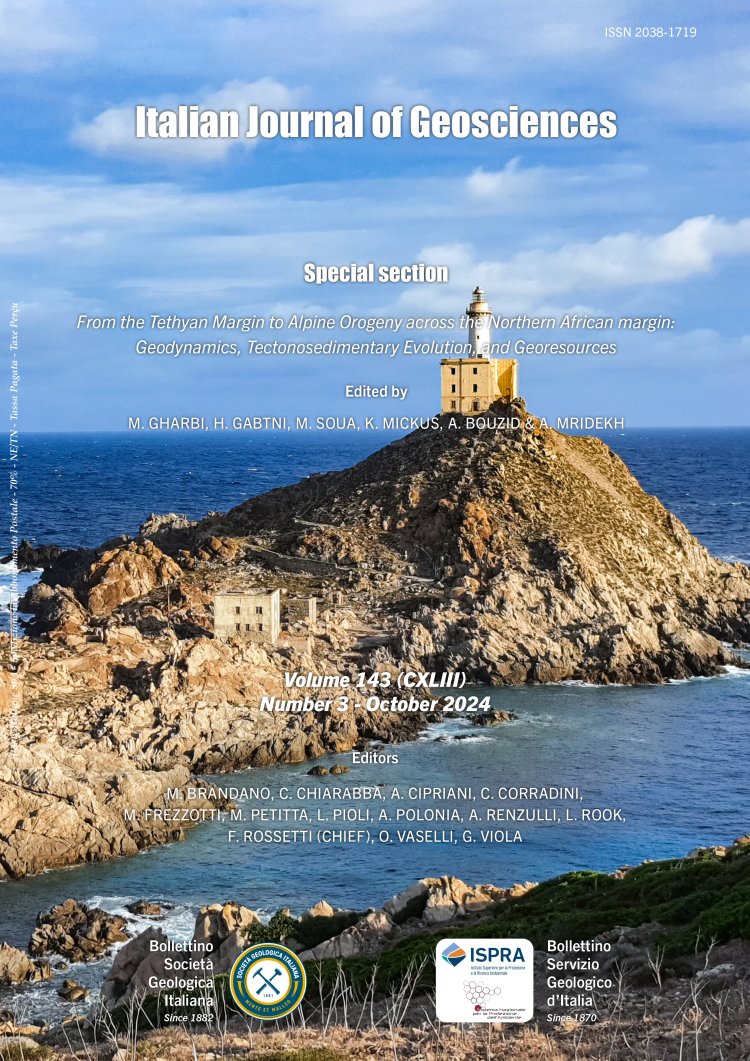
Foreland evolution in the inherited basement structure of the Pre-African Tinghir-Errachidia-Boudenib basin (Moroccan southern Atlas margin)
Mostapha Bouzekraoui1,2,3, Mourad Essalhi1, Mohamed Saadi1, Brahim Karaoui2, Mohamed Ghazali3 & Ahmed Manar3
1Geosciences, Water, Environment Laboratory, Earth Sciences Department, Faculty of Sciences, Mohammed V University in Rabat, 4 Avenue Ibn Battouta P.O. Box 1014, Rabat, Morocco.
2Applied Geology Laboratory, Faculty of Sciences and Techniques, Moulay Ismail University of Meknès, P.O. Box 509 Boutalamine, Errachidia, Morocco.
3Ministry of Energy Transition and Sustainable Development, Rabat, Morocco.
Corresponding author e-mail: mostapha.bouzekraoui@gmail.com
Volume: 143 (2024) f.3
Pages: 391-406
Abstract
The complex geological evolution of the Mesozoic Tinghir-Errachidia-Boudenib (TEB) basin in the southern edge of the Moroccan central-eastern High Atlas makes it an excellent key zone to study the architecture and tectonic history of the westernmost Tethyan margins. In this context, the present paper highlights the role of the inherited basement geometry of the TEB basin controlling the structural architecture of the sedimentary cover by integrating structural observations with petroleum boreholes interpretation and aeromagnetic investigation.
In the Pre-African TEB basin, the Mesozoic sedimentary sequences rest above a regional unconformity on the Precambrian and/ or Palaeozoic basement of the eastern Anti-Atlas. The sedimentary infill is mainly deposited in two ENE- to NE- striking sub-basins, named Errachidia and Boudenib, respectively, with differential subsidence rates and separated by an uplifted paleo-high basement. In field, the paleo-high structure corresponds to Bou-Bernous and Mechmech anticlines affecting the Cretaceous series. Generally, in the Pre-African TEB basin the subsidence rate increases from south to north and from west to east. From the aeromagnetic analyses, the
geometry of the TEB basin is formed by deep structures (Errachidia area and south of Boudenib) and has a variable deepening of the basement surface, ranging approximatively from 800 m to ≥ 10 000 m. The uplifted zones are organised along three major basement paleo-highs: the Tinghir-Tadighoust-Errachidia, Goulmima-Aoufous and Aoufous-Tazzouguert, trending NE-SW, E-W and NE-SW, respectively. The structural architecture model of the TEB sub-basins can be explained by the control exerted by the inherited basement geometry during the polyphase Alpine tectonic evolution at the southern margins of the High Atlas.
Keywords
inherited basement structure, foreland evolution, southern Atlas margin, Tinghir-Errachidia-Boudenib basin, Morocco.
Get Full Text